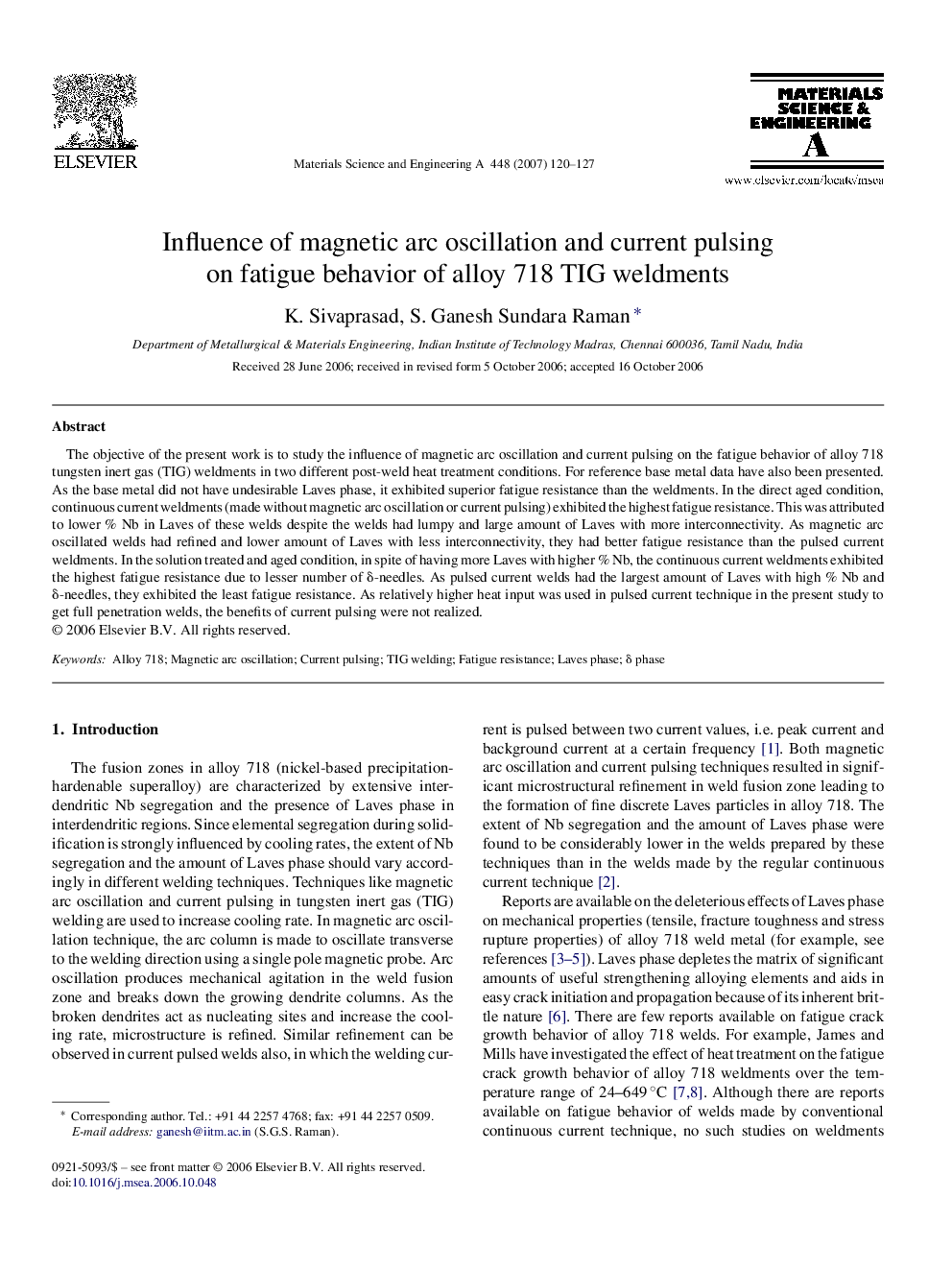| Article ID | Journal | Published Year | Pages | File Type |
|---|---|---|---|---|
| 1584509 | Materials Science and Engineering: A | 2007 | 8 Pages |
The objective of the present work is to study the influence of magnetic arc oscillation and current pulsing on the fatigue behavior of alloy 718 tungsten inert gas (TIG) weldments in two different post-weld heat treatment conditions. For reference base metal data have also been presented. As the base metal did not have undesirable Laves phase, it exhibited superior fatigue resistance than the weldments. In the direct aged condition, continuous current weldments (made without magnetic arc oscillation or current pulsing) exhibited the highest fatigue resistance. This was attributed to lower % Nb in Laves of these welds despite the welds had lumpy and large amount of Laves with more interconnectivity. As magnetic arc oscillated welds had refined and lower amount of Laves with less interconnectivity, they had better fatigue resistance than the pulsed current weldments. In the solution treated and aged condition, in spite of having more Laves with higher % Nb, the continuous current weldments exhibited the highest fatigue resistance due to lesser number of δ-needles. As pulsed current welds had the largest amount of Laves with high % Nb and δ-needles, they exhibited the least fatigue resistance. As relatively higher heat input was used in pulsed current technique in the present study to get full penetration welds, the benefits of current pulsing were not realized.
